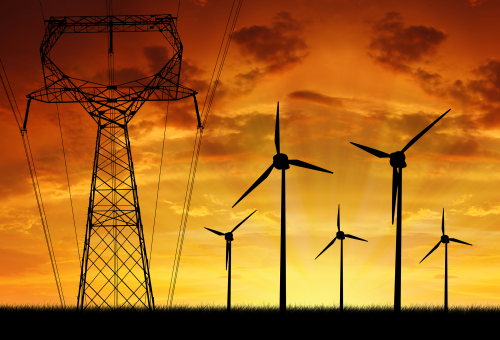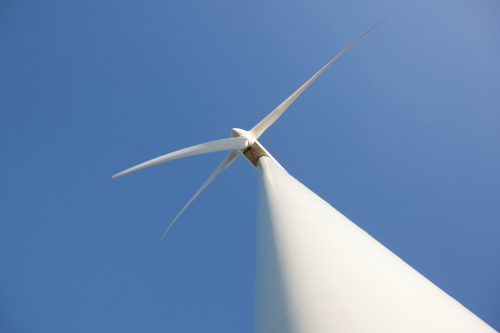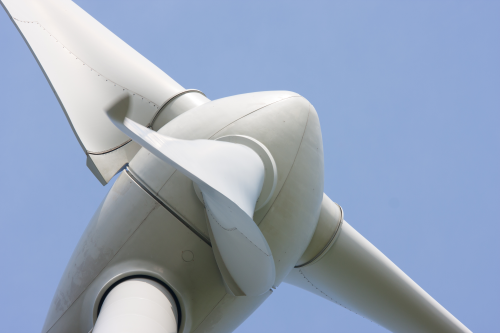


A significant new market could develop for reinforced plastics, thanks to wind energy. Composites have already been a key enabler for this burgeoning new industry, contributing hugely to wind turbine blades, nacelles, cabins and various smaller items, but there is one area of promise where they have not yet fully penetrated. That is the towers, foundations and transition pieces that hold the turbines ‘up there’ which, until now, have been almost exclusively of ferrous metal and concrete.
A problem for these ubiquitous materials is that they are heavy and as towers become taller, due both to the need to place long-bladed multi-megawatt machines higher and the drive to locate offshore turbines in ever deeper waters, elements of the supporting infrastructure become too bulky and heavy to transport and erect. This creates a new window of opportunity for composites, which could provide lighter, more manageable structures. Rotor blades may have attracted most of the attention of the composites community to date but the opportunities presented by the seemingly less glamorous tower and foundation sector should not be overlooked. Unfortunately, although composite towers have been the subject of research projects and papers, to date very few have been produced. In fact PPG Industries refers to a 65ft (20m) tall wind turbine prototype that was deployed into the Penobscot River in Maine, USA, last May as a world first. According to Kevin McDonald, general manager of PPG’s fibreglass business, the turbine, called VolturnUS 1.8, is a one-eighth scale prototype of a 6MW VolturnUS floating wind turbine intended for offshore use. The full-scale turbine will have a 423ft (129m) rotor diameter and will be mounted atop a 270ft (82m) high fibreglass composite tower. Prime mover in the Volturn project, which is aimed at reducing the cost of offshore wind energy, is the University of Maine whose Structures and Composites Centre is developing improved technologies including strong, light corrosion resistant composite materials for tower and foundation structures. Working with the DeepCwind industrial consortium, the University aims eventually to have four 3MW ‘floaters’ placed around 14 miles (22km) off the coast. Each installation will comprise a three-column concrete and composite floating platform supporting a centrally mounted turbine. The tower for the one eighth-scale turbine was fabricated by Ershigs Inc, a company that has decades of experience in producing FRP pipes, tanks and massive cylindrical structures and is keen to apply its expertise within the wind industry. Ershigs offers complete turnkey solutions, from design and engineering through manufacture to tower erection on site. Ershig’s tower production concept is to manufacture modules that are readily transportable and joined together on site. Each module is produced by winding onto a large rotating mandrel multiple filaments, using a 26ft (8m) by 45ft (13.7m) horizontal field winder (currently). Each module has a smaller diameter at the top than at the base. This is for two reasons; first to be able to extricate the mandrel after the module has been formed and secondly, so that when all the modules for a given tower are joined together, the result is a graceful, tapering shape. The academics at Maine, along with PPG and Ershig, are clear that composites offer major advantages for wind turbines, both on and offshore. The ability to optimise the properties of the structure at any point through material selection, fibre alignment and manufacturing technique, means that all anticipated loads, whether static, dynamic or cyclic, can be accommodated without over-engineering and with substantial weight saving. Composite structures suffer much less from fatigue when subjected to repeated load cycling than do metals and they do not corrode, even in the aggressive marine environment which is so inimical to steel. Hence, they are altogether more durable. Nor does cost have to be the drawback that it is sometimes thought to be. Several years ago, a company called WindTower Composites estimated that for a 25-unit wind farm the cost of composite towers would be 28% less than for steel equivalents. Even though the cost per unit weight is higher, the lower total weight, with consequent lower transport and erection costs, means that composite towers can be competitive economically. Ershig was also lead partner in a related research initiative involving another academic institution, the University of Dayton Research Institute in Ohio. Other team members included the Edison Materials Technology Centre in Dayton, WebCore Technologies, Owens Corning and Ashland Performance Materials. In announcing government financial support of $270,000 for the programme three years ago Brian Rice, division head for Multi-Scale Composites and Polymers at UDRI said: “Wind turbine towers have to be strong enough to not only carry the weight of the turbine, which might be as much as 100 tons, but also to resist buckling under the stress of the rotating machinery. To accommodate the weight and stress, steel monopoles are pre-fabricated in sections as large as 14ft (4.2m) in diameter and 70ft (21.3m) long, then trucked individually to the wind site to be fitted together and installed on a concrete foundation. If you increase the height of the tower, you have to increase its diameter as well, which means that the next generation of wind turbines will require towers that will be too large to ship via highway, even in sections.” Clearly, Rice had onshore installations in mind at the time and suggested that composite tower sections could be produced at the wind farm with raw materials trucked to the site and perhaps using local labour. This approach, he considered, would be particularly useful for those sites in remote or hilly locations where the wind resource is plentiful but truck access is challenging or impossible. For offshore wind farms, the modular manufacturing technique would be favoured, module logistics being somewhat less challenging than dealing with complete towers. In either case, Rice foresaw that 100m high composite towers would be both practical and desirable. ♦
Part 2 of this article will be available soon.
This article was published in the January/February 2014 issue of Reinforced Plastics magazine.
The digital edition of Reinforced Plastics is distributed free of charge to readers who meet our qualifying criteria. You can apply to receive your free copy by completing this short registration form.






